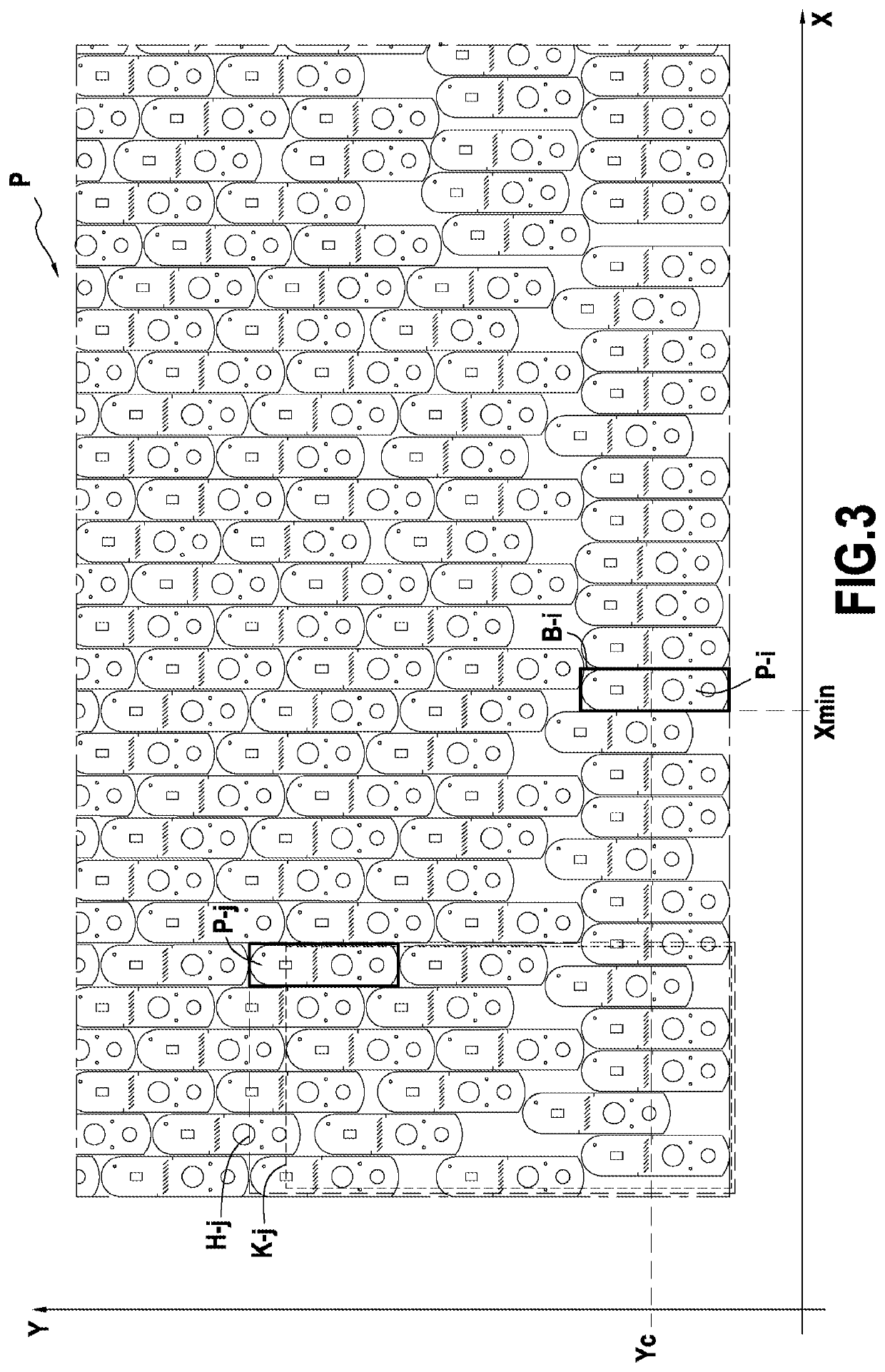Method for partitioning a predetermined placement of parts intended to be cut in a flexible sheet material
a flexible sheet material and predetermined technology, applied in forecasting, clothes making applications, data processing applications, etc., can solve the problems of reducing the overall cost of production of such parts, and reducing the efficiency of layout, so as to avoid cutting defects in sensitive areas. , the effect of reducing the layout efficiency
- Summary
- Abstract
- Description
- Claims
- Application Information
AI Technical Summary
Benefits of technology
Problems solved by technology
Method used
Image
Examples
Embodiment Construction
[0034]The invention applies to laying out parts that are to be cut out from a flexible sheet material by digitally controlled cutter machines including a working table on which the parts are cut out.
[0035]In known manner, the working table of such a cutter machine is constituted by the top surface of an endless conveyor received in a box within which suction can be established using a technique well known to the person skilled in the art. A flexible sheet material is placed on the endless conveyor, which supports and moves the material continuously along the working table. The material is caused to advance on the working table in a longitudinal direction X under the control of the drive motor of the conveyor.
[0036]The installation also includes a cutter system made up of one or more cutter tools that can move horizontally along the longitudinal direction X of the conveyor and also along a transverse direction Y perpendicular to the direction X. Each of these cutter tools moves over ...
PUM
 Login to View More
Login to View More Abstract
Description
Claims
Application Information
 Login to View More
Login to View More - R&D
- Intellectual Property
- Life Sciences
- Materials
- Tech Scout
- Unparalleled Data Quality
- Higher Quality Content
- 60% Fewer Hallucinations
Browse by: Latest US Patents, China's latest patents, Technical Efficacy Thesaurus, Application Domain, Technology Topic, Popular Technical Reports.
© 2025 PatSnap. All rights reserved.Legal|Privacy policy|Modern Slavery Act Transparency Statement|Sitemap|About US| Contact US: help@patsnap.com



